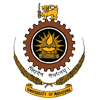
Sri Lanka’s cultural landscape marked a historic milestone with the inauguration of the Ehelepola Walawwa Wax Museum on July 17, 2025, which was ceremonially opened to the Sri Lankan public by His Excellency, President Anura Kumara Dissanayake. This visionary project, headed by the lay custodian Diyawadana Nilame of Sri Dalada Maligawa, Mr. Pradeep Nilanga Dela Bandara, brings the grandeur of the Kandyan Kingdom to life through meticulously crafted wax figures, adorned in historically accurate and aesthetically refined costumes. The University of Moratuwa made a landmark contribution to this national endeavour, playing a key role in Sri Lanka’s first wax museum.
Triumph of Historical Fashion Reconstruction
The team of experts from the Department of Textile & Apparel Engineering at the University of Moratuwa (UoM) played a pivotal role in recreating the royals and some selected elite female fashion of the Kandyan Kingdom. Led by Prof. Virajini Medagedara Karunaratne, Prof. Gayathri Madhubani Ranathunga, and Dr. Prabod Dharshana Munasinghe, the team embarked on a year-long journey to research, design, and construct 58 garment pieces for the museum’s 18 lifelike statues.
Professor Virajini and Professor. Gayathri have been engaged in traditional Kandyan costume-related research for over two decades. As the first scholars in Sri Lanka to earn PhDs in Integrated Design and the only professors specializing in costume and fashion in the country, they have made significant contributions to the preservation and interpretation of Sri Lanka’s sartorial heritage.
Their work has primarily focused on the costume culture of the Kotte and Kandyan Kingdoms, forming the basis for a comprehensive body of scholarly output. This includes more than 80 peer-reviewed research papers, presentations at both national and international conferences, and the publication of several authoritative books on traditional dress. In addition, they have produced three documentary-style videos that explore the nuances of Kandyan dress and draping techniques.
Through years of meticulous fieldwork, archival study, and hands-on documentation, and material culture analysis, they have developed a robust and reliable database of historical costume references, which played a critical role in the accurate reconstruction of royal attire for the Ehelepola Walawwa Wax Museum project. Their expertise continues to serve as a cornerstone for design-led cultural preservation in Sri Lanka.
Some of their notable published works related to the royal and elite costumes of the Kandyan Kingdom are listed below.
- Dr. Gayathri Madubhani Ranathunga, “Fashions of Royalty: The Kandyan Kingdom of Sri Lanka”, 2018 - S. Godage & Brothers. ISBN:978-955-30-9253-3.
- Dr. Priyanka Virajini Medagedara Karunarathne, “Fashion of Royalty: The Kotte Kingdom of Sri Lanka”, 2018 - S. Godage & Brothers. ISBN: 978-955-30-9371-4
- Video production :2019 - Video documentary: "Dignified Bodies" Extravagant volume and wrapping techniques in the Kandyan Elite costume (male/female) in Sri Lanka
https://www.youtube.com/watch?v=rnXS_4BNCEk
- Ceremonial Bodies: Cloth Wrapping and Draping Systems in Tradition. (costume of The Officials of the "Thevavwa" of the Temple of the Tooth, Kandy
https://www.youtube.com/watch?v=fGQzTXPYQkQ
They regarded this golden opportunity as a milestone in their academic journey, as it allowed them to transform their extensive intangible research data into a tangible representation of eighteen historical characters, as shown below.
- King Vimaladharmasuriya 1
- King Senarat
- King Rajasinghe 11
- King Vimaladharmasuriya 11
- King Sri Veera Parakrama Narendrasinghe
- King Sri Vijaya Rajasinghe
- King Kirthi Sri Rajasinghe
- King Rajadhi Rajasinghe
- King Sri Wickrama Rajasinghe
- Queen Kusumasana Devi
- Queen Venkatha Rangammal
- Ehelaepola Kumaríhamí
- Ehelepola Tikiri Kumari
- Lewke Rala
- Justice A. C. Lawrie
- Sir Robert Brownrigg
- Robert Knox
- Sir John D’ Oyly
Unravelling the Threads of History
To achieve unparalleled authenticity, the UoM team conducted exhaustive investigations, scrutinising:
- Over 200 temple paintings (from Dalada Maligawa, Degaldoruwa, and Dambulla)
- Historical records, colonial documents, and books (including Journal Of Spilbergen: the first Dutch envoy to Ceylon, 1602 and Robert Knox’s A Historical Relation of Ceylon)
- Costume exhibits at museums and textiles from the Kandyan era
This meticulous research enabled the recreation of exact silhouettes, draping styles, and draping techniques worn by Kandyan royals. Special attention was paid to:
- Pataloon- loose-fitted and voluminous trousers, and their tailored fit
- Manthe (traditional collars) – Their unique pleating and tailored fit
- Elaborate overcoats, waistcoats, and shirts – Worn in precise, historically documented layers
- Fabric colour, design and motifs, textures and weaving patterns – Faithfully replicated to match Kandyan era craftsmanship.
Reconstructing Kandyan Royal Attire: From Historical Accuracy to Fashion Revival
The Kandyan Kingdom represented the final phase of ancient Sri Lankan governance, during which the society experienced significant influence from the Portuguese, Dutch, and British colonial powers. As the royal class held the highest social status, they maintained direct contact with foreign representatives, which in turn affected their sartorial practices. The costume of the Kandyan kings evolved into a hybrid form, an integration of both Western and Eastern elements, blending foreign styles with traditional attire to create a distinctive and original royal costume. As a result of foreign influence, royal attire evolved into a blend of constructed garments and traditional draped elements.
Identifying the dress items for construction was a daunting challenge, as each piece was expected to reflect historical accuracy while embodying the aesthetic sensibilities of its time, as it is clearly shown by King Vimaladharmasuriya 1. Moreover, from the 15th century to the early 19th century, we were able to trace and reconstruct the fashion trends of each reigning king. At the end, we produced 58 costume pieces.
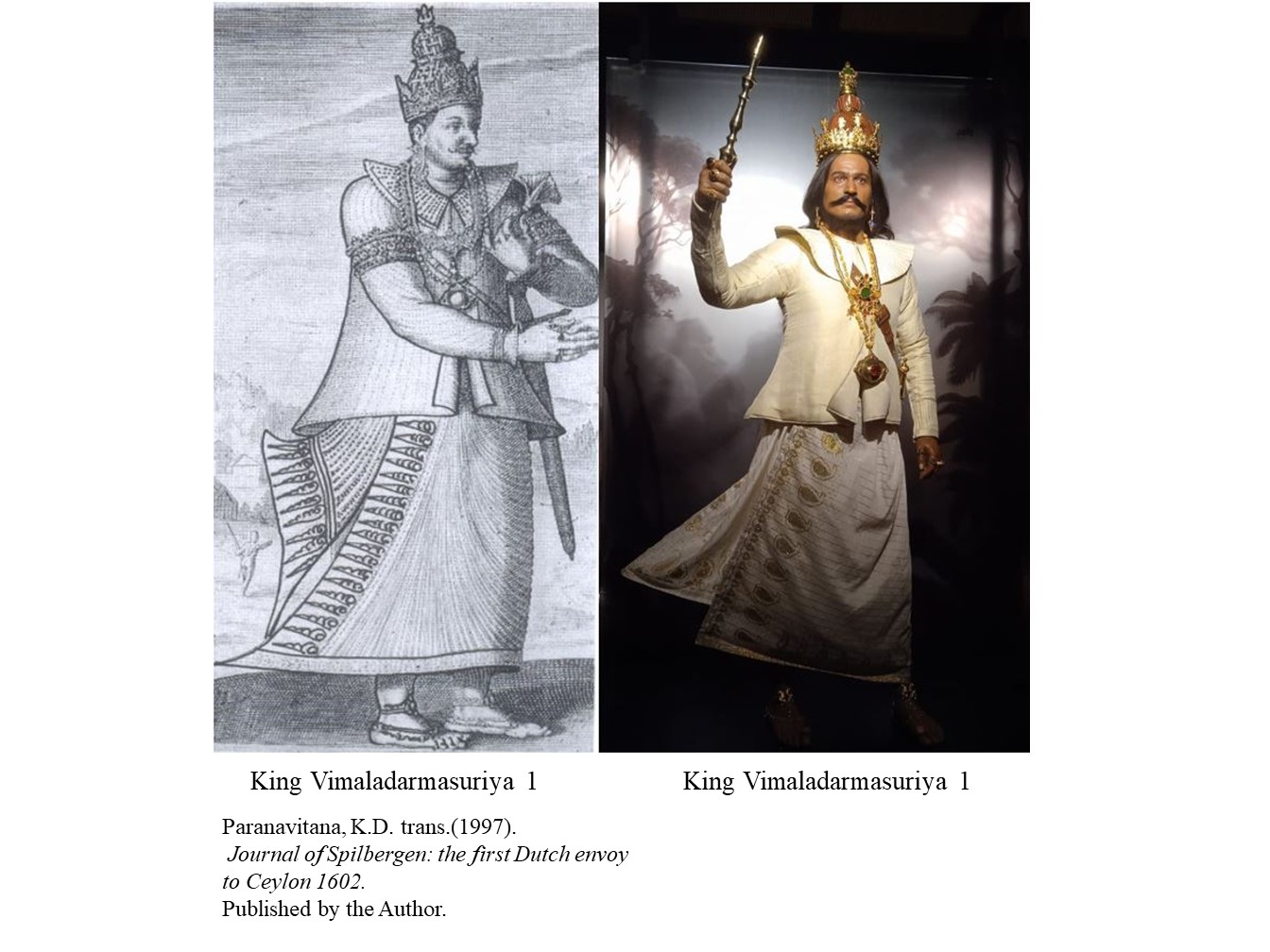
Figure 1: The transformation of the so-called Kandyan majestic soft power into a tangible fashion product.
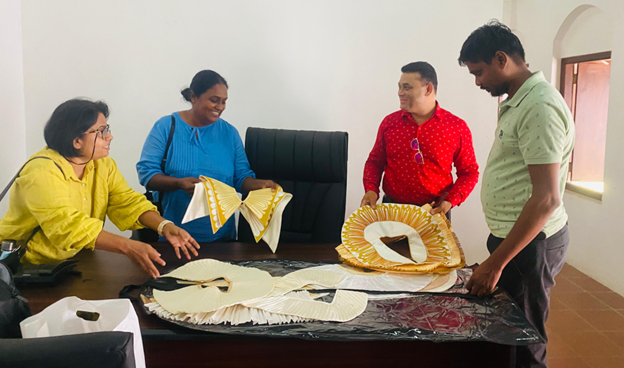
Figure 2: The team celebrating the successful execution of the Mante (collar)of Kandyan Royals with Project Coordinator, historian Professor Rohitha Dasanayake from University of Peradeniya.
Figure 3: Learning from Trial and Errors: ‘Investigation, Observation, and Conclusion’
Recreating Kandyan Royal Textiles: A Journey of Historical Accuracy and Craftsmanship
The next task involved identifying and analyzing historical data on Kandyan textiles, in order to provide detailed and comprehensive information necessary for their accurate re-creation. Kandyan royals exclusively wore costumes made from foreign textiles, many of which were gifted by foreign diplomats. These rare and expensive textiles symbolized luxury and delicate aesthetics, reserved solely for individuals of the highest social status. Among them were Bengali muslin, South Indian chintz, Indonesian textiles and Indian brocade, and exquisite Persian fabrics collectively known as exclusive textiles.
The term "exclusive" was interpreted practically in order to accurately reproduce these materials. Our research revealed that these textiles were not only aesthetically exceptional but also technically challenging to recreate. By meticulously following every recovered detail pertaining to each royal subject’s textiles, we successfully developed a magnificent range of authentic fabrics.
The textile production was undertaken by the Textile Department of the Central Province. Without their immense dedication, patience, and innate talent, this achievement would not have been possible.
Collaboration with Traditional Weavers
The Department of Textiles, Director of Central Province, Mrs Sanjeewani Amarathunga, assisted by Development Officer Mrs Geethika Fernando partnered with 13 handloom weaving centres to produce authentic historic fabrics. This collaboration revived traditional handloom techniques, ensuring each textile matched the opulence of Kandyan-era attire. We acknowledge and express our gratitude to the associated weaving centers, listed below.

Figure 4:Discussion on the way forward for handloom textile production with the Central Provincial Director of Textiles, Mrs. Amarathunga, accompanied by Mrs. Geethika, together with Professor Rohitha.
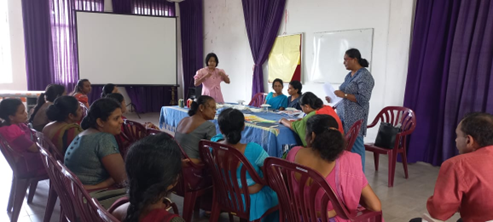
Figure 5:Seeking possibilities of producing textiles for royal costumes: discussion with weaving instructors together with Central Provincial Director, Mrs. Amarathunga

Figure 6:Weaving the shawl of Queen Venkatha Rangammal at the weaving centre-Doolwala together with Instructor Mrs. Anushiya and weaver
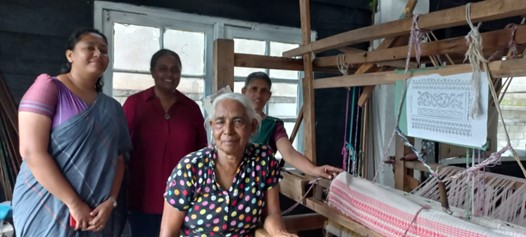
Figure 7:A master weaver crafting King Senarath’s long lower cloth at Danthure weaving centre, together with Instructor Mrs. Udeni Kumudu Kumari
Construction of an array of textiles
Textiles are often referred to as the "second skin" of the human body, serving not only as a protective layer but also as a powerful medium of cultural expression. Throughout history, clothing and fabrics have reflected the identity, values, and traditions of a society. From the choice of materials and weaving techniques to colors, motifs, and styles, textiles communicate social status, regional identity, religious beliefs, and historical narratives. In this way, they become a living archive of a nation's heritage, silently narrating stories of its people, craftsmanship, and evolving cultural landscapes.
For the nine kings, one queen, and the elite female figure, custom-made handwoven fabrics were produced at traditional weaving centers in the Central Province by skilled artisans. Each king was assigned three distinct types of fabrics, one each for shirts, waistcoats, and trousers. These fabrics were created using varied woven structures, particularly to achieve the desired volume and form of the trousers, where fabric structure played a pivotal role in shaping the silhouette.
Waistcoat fabrics also varied among the kings, highlighting the luxurious aesthetic appropriate to royal stature. The rich textures and intricate, exotic designs of these textiles contributed to an overall sense of grandeur, reflecting the refined fashion sensibilities of the Kandyan monarchs. These handwoven textiles were inspired by historical records and documentation of Sri Lanka’s ancient textile trade, showcasing a deep-rooted connection between craftsmanship, culture, and royal identity.
For the queen, a saree and shawl were specially woven, featuring 19th-century-inspired motifs. Additionally, a saree incorporating traditional Kandyan motifs was created for the elite noblewoman, Ehelepola Kumarihami.
Contribution of Central Province Weaving Centres to the Production of Handwoven Fabrics
- Haragama
- Hurikaduwa
- Mawathura
- Doolwala
- Perihilwatta
- Hindagala
- Danthure
- Dodamwala
- Kalalpitiya
- Rathmalkaduwa
- Hewawissa
- Bomure
- Kapuliyadda
From Concept to Reality: The Technical Execution
The University of Moratuwa team transformed diligent research into a tangible reality through a multi-layered technical process. Dr. Prabod Dharshana Munasinghe spearheaded the design and pattern-making phase, converting centuries-old historical data into precise technical patterns.
Dr. Prabod Dharshana Munasinghe's exceptional academic credentials and research expertise made him uniquely qualified to lead this ambitious historical fashion reconstruction. As a Presidential Award-winning researcher with a PhD in Sustainable Fashion from the University of Moratuwa, his scholarly work includes groundbreaking publications on fashion design process and sustainable design, earning him the prestigious Emerald Literati Best Paper Award in 2023. His academic excellence was further demonstrated through the Outstanding Designer Brand Award at the University of Moratuwa's Graduation Fashion Show 2013 and a Bright Spark at Colombo fashion week 2013, recognizing his innovative design capabilities.
Beyond theoretical knowledge, Dr. Munasinghe brought invaluable hands-on experience to the project. His extensive engagement with Sri Lanka's traditional handloom weavers through government initiatives and training programs gave him deep insight into historical textile techniques. This practical background, combined with his advanced pattern-making skills honed through numerous fashion collections, enabled him to accurately translate centuries-old designs into wearable garments. His ability to bridge historical accuracy with modern garment engineering was particularly crucial for recreating complex Kandyan silhouettes.
By applying advanced garment engineering principles, the team successfully replicated the complex draping styles of Kandyan attire by following several fit-on sessions and hundreds of prototypes and mockups, ensuring an exact fit for each wax figure’s unique proportions. This process bridged the gap between archival knowledge and physical craftsmanship, requiring innovative solutions to interpret fragmented historical records into wearable art.
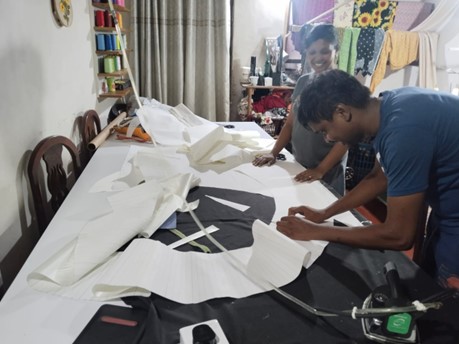
Figure 8: The creation of the pleated mante for King Sri Wickrama Rajasinghe, using 12 yards of fabric, exemplifies lifelong learning through sustained engagement from concept to final product.
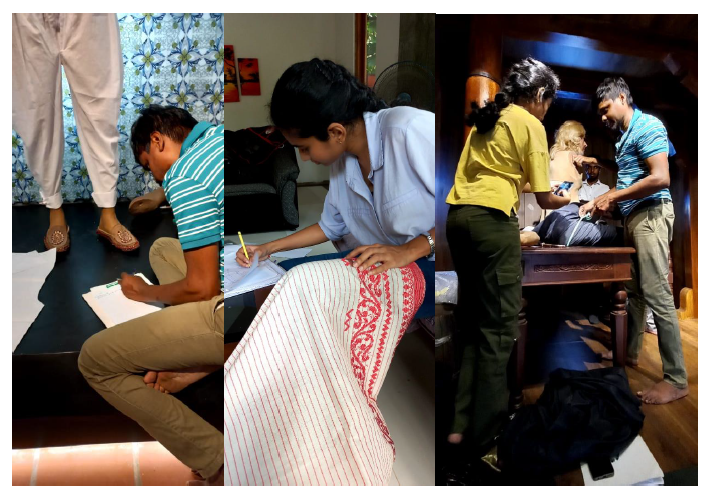
Figure 9: From Broad Vision to Fine Detail
The project also benefited from the contributions of University of Moratuwa graduates who are currently leading figures in costume production within the film industry. Mr. Manoj Akalanka, an alumnus of the Fashion Design and Product Development Degree program, was responsible for designing and developing costumes for four of the wax statues. Meanwhile, Ms. Bhagya Nilmini, a postgraduate candidate specializing in the development of a niche market toolkit for traditional Kandyan costumes specifically the Nilame and Ohoriya attire meticulously handled the technical detailing of fabrics to ensure historical accuracy and authenticity.
The final assembly was brought to life by the skilled hands of Mr. S. Sathyamoorthi, Ms. Shirani Siriwardena, Ms Renuka Dahanayake, Mr. Athula silva, Ms. Wajira Kanthi, Ms Chadrika Priyangani, Mr. Sadeewa Kumara and Mr. Niroshan Lakmal, local craftsmen, whose expertise in sewing ensured that each garment adhered to the highest standards of authenticity. Apart from that, Truefit, Colombo, Huda Tailors, Disul Gold Design and Yash Hat Lanka Private Limited also supported the product development process.
The Ehelepola Walawwa Wax Museum stands as a testament to Sri Lanka's rich heritage, where every detail from the exquisite period jewellery crafted by Mr. Swarnasinghe to the authentic footwear developed by Mr. Kanishka, ‘Banda’s Boots,Kandy’ was meticulously recreated. The initial designs for these jewelry and accessories were developed by another talented FDPD alumnus, Mr. Sajana Helnajith, showcasing how our university's expertise extended beyond textiles to encompass all elements of historical costume reproduction. This comprehensive approach ensures visitors experience a truly immersive journey into Kandyan era fashion, where every accessory tells its own story of craftsmanship and cultural significance.
A Legacy for Future Research
This groundbreaking project has set a new benchmark for historical fashion reconstruction in Sri Lanka. It achieved the first-ever accurate documentation of Kandyan elite clothing habits, providing an invaluable reference for future researchers in textile history, anthropology, and design. Beyond preservation, the team revived long-forgotten weaving and draping techniques, offering insights into the sophistication of 18th- and 19th-century Sri Lankan craftsmanship. These contributions ensure that the project will serve as both an educational resource and a catalyst for further academic exploration.
A Word from the Team
Reflecting on the project’s significance, Prof. Virajini Karunaratne noted,
"This was more than just a design project,it was a mission to preserve our heritage. Every stitch tells a story of the Kandyan Royals' sophistication."
Prof. Gayathri Madhubani Ranathunga added:
"Kandyan Textiles persuades people of its rich culture, giving the sense of timeless beauty. These costumes are a testament to Sri Lanka’s rich sartorial legacy."
Dr. Prabod Dharshana Munasinghe added,
"The challenge was converting 200-year-old references into wearable art. Now, these costumes will educate future generations."
Their words underscore the team’s dedication to blending historical reverence with technical innovation.
The Ehelepola Walawwa Wax Museum stands not just as a tribute to Sri Lanka's royal past, but as a shining example of what can be achieved when traditional knowledge meets modern academic excellence.
Through the visionary leadership of Diyawadana Nilame Nilanga Dela Bandara,and the groundbreaking historical costume production by the University of Moratuwa team, this project has woven together history, art and innovation into an unforgettable experience. As visitors walk through the museum, they don't just see wax figures; they witness the resurrection of an entire era, with every fold of fabric and every carefully recreated accessory telling its own story. This collaboration between cultural custodians, academic experts, and skilled artisans has resulted in more than just a museum, it has established a living laboratory for future generations to explore the material culture of costume and fashion. This remarkable initiative by the University of Moratuwa team sets a new fashion direction, bridging tradition and modernity while preserving the rich costume heritage of Sri Lanka.
Beyond cultural preservation, the project also holds potential for promoting cultural tourism and contributing to the national economy by attracting foreign visitors and generating revenue. The University of Moratuwa takes immense pride in contributing its academic and design expertise to this national treasure, which is set to inspire, educate, and captivate generations to come.
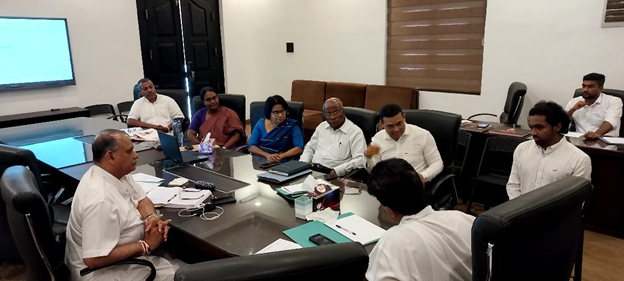
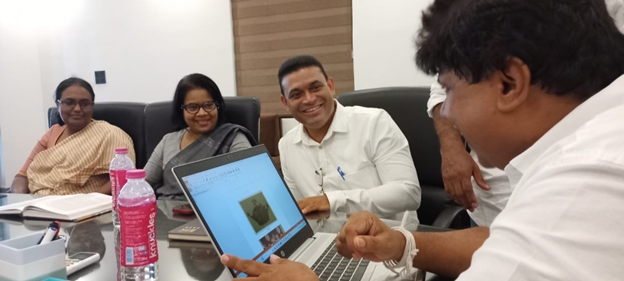
Figure 10: The Lay Custodian of the Temple of the Tooth Relic, Kandy, graciously accepted the academically grounded yet challenging decisions.
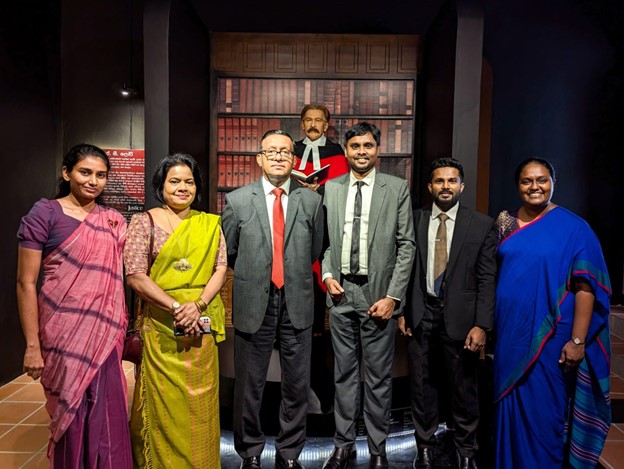
Figure 11: The Team with the Dean, Faculty of Engineering at the grand opening of the Ehelepola Wax Museum.
Appreciation and high regards from Senior Professor Jagath Manathunga: Dean, Faculty of Engineering, University of Moratuwa, validating how interdisciplinary and transdisciplinary research activities are an enduring national contribution.
The panel
Appointed By Ministry of Buddhasasana, Religious and Cultural Affairs
Hon Diyawadana Nilame of Sri Dalada Maligawa - Mr.Pradeep Nilanga Dela Bandara
Coordinator of the project: Professor Rohitha Dasanayake - Professor of History- University of Peradeniya
Professor Anura Manthunga -Professor of Archaeology- University of Kelaniya
Emeritus Professor HMRD Herath - Professor of Sociology- University of Peradeniya
Mr. Chamikara Pilapitiya- Explorer of history and author
- Identification, classification, concept development, and design development of the costumes and textiles
Professor Virajini Medagedara Karunaratne -Professor, Fashion Design & Product Development, Department of Textile & Apparel Engineering, Faculty of Engineering, University of Moratuwa. University of Moratuwa.
Professor Gayathri Madubani Ranathunga- Professor, Fashion Design & Product Development, Department of Textile & Apparel Engineering, Faculty of Engineering, University of Moratuwa.University of Moratuwa.
Dr Prabod Darshana Munasingha, Senior Lecturer, Fashion Design & Product Development, Department of Textile & Apparel Engineering, Faculty of Engineering, University of Moratuwa.
Ms. Bhagya Nilmini-B.Design and Postgraduate candidate, Department of Textile & Apparel Engineering- University of Moratuwa.
- Jewellery Design: Mr.Sajana Helanjith, Kandy
- Jewellery Production: Mr. Dhammika Swarnasinghe, Kandy
- Sculptor of Wax Statues: Mr. Athula Herath, Gampola
- AI images to wax sculptor: Mr. Chandula Nanayakkara, Kandy
- Interior Design- Mr. Mahima Herath, Gampola
- Dressing up Nilames and Adigars and their costume creation (nilame costume): Mr. Pubudu Jayarathne, Hindagala, Kandy
- Shoe creation: Banda’s Boots works, Kandy
